Endocannabinoid/Endocannabinoid-like
Products for Endocannabinoid/Endocannabinoid-like
- Cat.No. Product Name Information
-
GC48284
α-Linolenoyl Ethanolamide-d4
An internal standard for the quantification of αlinolenoyl ethanolamide

-
GC40817
γ-Linolenoyl Ethanolamide
γ-Linolenoyl ethanolamide is a member of the family of fatty N-acyl ethanolamines collectively called endocannabinoids.

-
GC41659
(±)-2-Methyl Arachidonoyl-2'-Fluoroethylamide
(±)-2-Methyl arachidonoyl-2'-fluoroethylamide (2-Methyl-2'-fluoro AEA) is an analog of anandamide (AEA) in which the alcohol of the ethanolamide group has been removed and replaced with a fluorine atom.
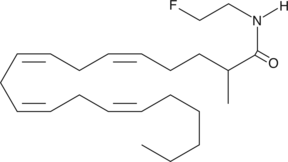
-
GC45270
(±)10(11)-EDP Ethanolamide
(±)10(11)-EDP ethanolamide is an ω-3 endocannabinoid epoxide and cannabinoid (CB) receptor agonist (EC50s = 0.43 and 22.5 nM for CB1 and CB2 receptors, respectively).

-
GC41288
(±)17(18)-EpETE-Ethanolamide
(±)17(18)-EpETE-Ethanolamide is an ω-3 endocannabinoid epoxide.

-
GC41655
(±)19(20)-EDP Ethanolamide
(±)19(20)-EDP ethanolamide is an ω-3 endocannabinoid epoxide and cannabinoid (CB) receptor agonist (EC50s = 108 and 280 nM for CB1 and CB2, respectively).

-
GC41709
(R)-(+)-Docosahexaenyl-1'-Hydroxy-2'-Propylamide
N-Acyl ethanolamines (NAEs) have diverse biological actions that are strongly affected by the associated acyl group.

-
GC41711
(R)-(+)-Linoleyl-1'-Hydroxy-2'-Propylamide
N-Acyl ethanolamines have diverse biological actions that are strongly affected by the associated acyl group.

-
GC41718
(R)-KT109
(R)-KT109 is the (R) isomer of the diacylglycerol lipase β (DAGLβ) inhibitor KT109.

-
GC41738
(S)-KT109
(S)-KT109 is the (S) isomer of the diacylglycerol lipase β (DAGLβ) inhibitor KT109.

-
GC40469
1-Arachidonoyl Glycerol
The glyceryl esters of arachidonic acid have been proposed as endogenous cannabinoid ligands.

-
GC41986
1-Arachidonoyl Lysophosphatidic Acid (ammonium salt)
1-Arachidonoyl lysophosphatidic acid is a phospholipid containing arachidonic acid at the sn-1 position.

-
GC41910
13-Docosenamide
13-Docosenamide is the amide of docosenoic acid.

-
GC41925
15(S)-HETE Ethanolamide
Arachidonoyl ethanolamide was the first endogenous cannabinoid (CB) to be isolated and characterized as an agonist acting on the same receptors (CB1 and CB2) as THC.
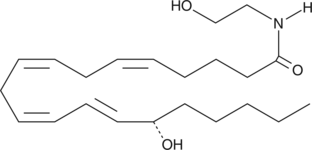
-
GC46535
2-Arachidonoyl Glycerol-d8
An internal standard for the quantification of 2arachidonoyl glycerol, Potent, endogenous CB1 agonist

-
GC40400
2-Linoleoyl Glycerol
2-Arachidonoyl glycerol (2-AG) has been isolated from porcine brain, and has been characterized as the natural endocannabinoid ligand for the CB1 receptor.

-
GC40405
2-O-Hexadecyl Glycerol
2-O-Hexadecyl Glycerol is a β-monoglyceride of palmitic acid.

-
GC42083
20-HETE Ethanolamide
Arachidonoyl ethanolamide (AEA) is an endogenous lipid neurotransmitter with cannabinergic activity, binding both the central cannabinoid (CB1) and peripheral cannabinoid (CB2) receptors.
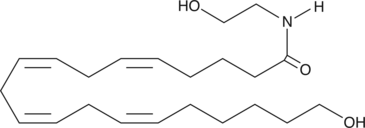
-
GC42320
4(Z),7(Z),10(Z),13(Z),16(Z)-N-(2-hydroxyethyl)-Docosapentaenamide
4(Z),7(Z),10(Z),13(Z),16(Z)-N-(2-hydroxyethyl)-Docosapentaenamide is a long-chain ω-6 fatty acid with a hydroxyethylamide group attached at the alpha chain.

-
GC42594
7(Z),10(Z),13(Z),16(Z),19(Z)-N-(2-hydroxyethyl)-Docosapentaenamide
4(Z),7(Z),10(Z),13(Z),16(Z)-N-(2-hydroxyethyl)-Docosapentaenamide is a long-chain ω-3 fatty acid with a hydroxyethylamide group attached at the alpha chain.

-
GC42668
ABC34
ABC34 is an inactive control probe for JJH260, the inhibitor of androgen-induced gene 1 (AIG1), an enzyme that hydrolyzes fatty acid esters of hydroxy fatty acids (FAHFAs).

-
GC42781
AMC Arachidonoyl Amide
AMC arachidonoyl amide (AMC-AA) is one of several fatty acid amides which can be used to measure fatty acid amide hydrolase (FAAH) activity.

-
GC42839
Arachidonoyl Ethanolamide Phosphate
Arachidonoyl ethanolamide was the first endogenous cannabinoid (CB) to be isolated and characterized as an agonist acting on the same receptors (CB1 and CB2) as δ9-THC.
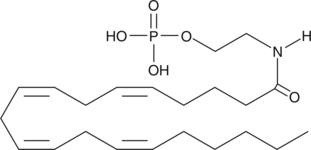
-
GC46876
Arachidonoyl Ethanolamide-d8
An internal standard for the quantification of arachidonoyl ethanolamide
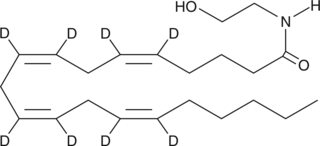
-
GC46877
Arachidonoyl Glycine-d8
An internal standard for the quantification of arachidonoyl glycine
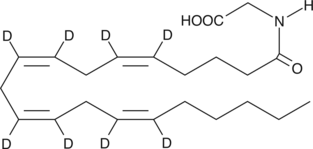
-
GC42840
Arachidonoyl m-Nitroaniline
Arachidonoyl m-Nitroaniline (AmNA) is one of several nitroaniline fatty acid amides which can be used to measure fatty acid amide hydrolase (FAAH) activity.

-
GC42842
Arachidonoyl p-Nitroaniline
Arachidonoyl p-nitroaniline (ApNA) is one of several nitroaniline fatty acid amides which can be used to measure fatty acid amide hydrolase (FAAH) activity.

-
GC42844
Arachidonoyl-1-thio-Glycerol
2-Arachidonoyl glycerol (2-AG) is an endogenous agonist of the central cannabinoid (CB1) receptor.

-
GC42845
Arachidonoyl-2'-Fluoroethylamide
Arachidonoyl-2'-fluoroethylamide (2-fluoro AEA) is an analog of anandamide in which the alcohol of the ethanolamide group has been removed and replaced with a fluorine atom.

-
GC42847
Arachidonoyl-N,N-dimethyl amide
Anandamide (AEA) is an endogenous cannabinoid that binds to both central cannabinoid (CB1) and peripheral cannabinoid (CB2) receptors.
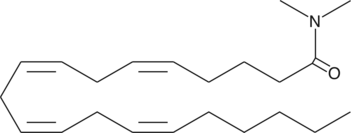
-
GC42848
Arachidonoyl-N-methyl amide
Anandamide (AEA) is an endogenous cannabinoid that binds to both central cannabinoid (CB1) and peripheral cannabinoid (CB2) receptors.
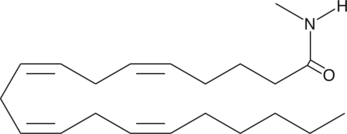
-
GC42849
Arachidoyl Ethanolamide
The endocannabinoids present a rich system of central cannabinoid (CB1), peripheral cannabinoid (CB2), and non-CB receptor-mediated pharmacology that has stimulated research in many fields including memory, weight loss and appetite, neurodegeneration, tumor surveillance, analgesia, and inflammation.

-
GC42850
Arachidoyl glycine
Arachidoyl glycine consists of the C20:0 fatty acid with glycine attached at its carboxy terminus.
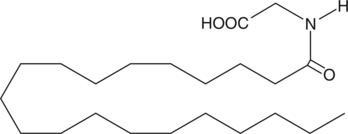
-
GC43148
CAY10401
Fatty acid amide hydrolase (FAAH) is the enzyme responsible for hydrolysis and inactivation of fatty acid amides including anandamide and oleamide.

-
GC40821
CAY10435
Fatty acid amide hydrolase (FAAH) is the enzyme responsible for hydrolysis and inactivation of fatty acid amides including anandamide and oleamide.

-
GC43157
CAY10455
CAY10455 is a labeled analog of arachidonoyl ethanolamide (anandamide; AEA) that is non-fluorescent when outside the cell.

-
GC43457
Dihomo-γ-Linolenoyl Ethanolamide
Dihomo-γ-linolenoyl ethanolamide is an endocannabinoid containing dihomo-γ-linoleate in place of the arachidonate moiety of AEA.
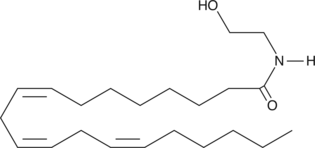
-
GC40687
Docosaenoyl Ethanolamide
Docosaenoyl ethanolamide is a member of the family of fatty N-acyl ethanolamines collectively called endocannabinoids.

-
GC47253
Docosahexaenoyl Ethanolamide-d4
An internal standard for the quantification of docosahexaenoyl ethanolamide

-
GC43556
Docosahexaenoyl Glycine
The ω-3 polyunsaturated fatty acids (PUFAs) found in fish oils provide cardiovascular benefits.

-
GC40691
Docosanoyl Ethanolamide
The endocannabinoids present a rich system of central cannabinoid (CB1), peripheral cannabinoid (CB2), and non-CB receptor-mediated pharmacology that has stimulated research in many fields including memory, weight loss and appetite, neurodegeneration, tumor surveillance, analgesia, and inflammation.

-
GC43591
Eicosapentaenoyl 1-propanol-2-amide
Monoacylglycerols (MAGs) of ω-3 polyunsaturated fatty acids have diverse physiological and health effects.

-
GC43593
Eicosapentaenoyl Ethanolamide
Eicosapentaenoyl Ethanolamide (EPEA) is an N-acylethanolamide that inhibits dietary-restriction-induced lifespan extension in wild type and TOR pathway mutant nematodes.

-
GC47283
Eicosapentaenoyl Ethanolamide-d4
An internal standard for the quantification of EPEA

-
GC43774
Glycerophospho-N-Arachidonoyl Ethanolamine
N-Acylated ethanolamines (NAE) are naturally-occurring lipids that have diverse bioactivities.

-
GC40408
Glycerophospho-N-Palmitoyl Ethanolamine
N-Acylated ethanolamines (NAE) are naturally-occurring lipids that have diverse bioactivities.
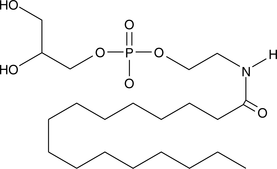
-
GC41487
Heptadecanoyl Ethanolamide
Palmitoyl ethanolamide (PEA) is an endogenous cannabinoid found in brain, liver, and other mammalian tissues.
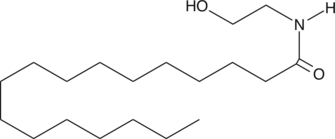
-
GC43891
IDFP
The endocannabinoids, 2-arachidonoyl glycerol (2-AG) and arachidonoyl ethanolamide (AEA), are biologically active lipids that regulate diverse neurological and metabolic functions by activating the cannabinoid receptors, central cannabinoid (CB1) and peripheral cannabinoid (CB2).

-
GC43918
Isopropyl dodec-11-enylfluorophosphonate
Isopropyl dodec-11-enylfluorophosphonate is an organophosphorus ester that antagonizes the central cannabinoid (CB1) receptor and inhibits FAAH with similar potencies (IC50s = 2 nM).

-
GC43928
JJH260
JJH260 is an N-hydroxy hydantoin carbamate that inhibits androgen-induced gene 1 (AIG1), an enzyme that hydrolyzes fatty acid esters of hydroxy fatty acids (FAHFAs).

-
GC40864
JP104
The enzyme, fatty acid amide hydrolase (FAAH), is widely expressed in brain and other tissues, and is capable of hydrolyzing anandamide (AEA) and other simple esters and amides with long unsaturated acyl chains.

-
GC43935
JW 618
Endocannabinoids such as 2-arachidonoyl glycerol (2-AG) and arachidonoyl ethanolamide are biologically active lipids that are involved in a number of synaptic processes including activation of cannabinoid receptors.

-
GC44014
KT109
In humans, two forms of diacylglycerol lipase, DAGLα and DAGLβ, generate the endocannabinoid 2-arachidonoyl glycerol by attacking DAG at the sn-1 position.

-
GC44015
KT109 N2 Regioisomer
KT109 N2 regioisomer is an N2-carbamoylated regioisomer of the diacylglycerol lipase β (DAGLβ) inhibitor KT109.

-
GC44041
Lauric Acid Leelamide
Lauric acid leelamide is the lauric (C-12) amide analog of leelamine.

-
GC44049
LEI-106
In humans, two forms of diacylglycerol lipase, DAGLα and DAGLβ, generate the endocannabinoid 2-arachidonoyl glycerol by attacking DAG at the sn-1 position.

-
GC44065
Lignoceroyl Ethanolamide
Lignoceroyl ethanolamide is a member of the family of fatty N-acyl ethanolamines collectively called endocannabinoids.

-
GC44072
Linoleoyl Ethanolamide
Linoleoyl ethanolamide is an endocannabinoid detected in porcine brain and murine peritoneal macrophages which contains linoleate in place of the arachidonate moiety of arachidonyl ethanolamide (AEA).
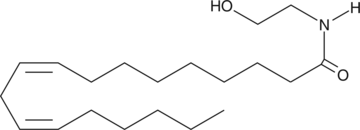
-
GC44073
Linoleoyl Ethanolamide Phosphate
Linoleoyl ethanolamide phosphate is an intermediate in the biosynthesis of linoleoyl ethanolamide that can be generated through phospholipase C-mediated hydrolysis of N-acylphosphatidylethanolamine.

-
GC47568
Linoleoyl Ethanolamide-d4
An internal standard for the quantification of linoleoyl ethanolamide

-
GC44074
Linoleoyl Glycine
Arachidonyl glycine, the conjugate of arachidonic acid and glycine produced in mammalian brain, skin, and spinal cord, is a structural analog of anandamide (AEA) that is reported to have analgesic activities in whole animal experiments.

-
GC41185
MAGL Inhibitor Compound 23
MAGL Inhibitor Compound 23 is a potent, selective, reversible and competitive inhibitor of MAGL, with an IC50 of 80 nM. MAGL Inhibitor Compound 23 exhibits anti-proliferative effects against human breast, colorectal, and ovarian cancer cells. MAGL Inhibitor Compound 23 blocks MAGL in cell-based as well as in vivo assays.

-
GC44261
Myristoyl Ethanolamide
Myristoyl ethanolamide is a member of the family of fatty N-acyl ethanolamines collectively called endocannabinoids.

-
GC41361
N-(1-(3,4-Dihydroxyphenyl)propan-2-yl)oleamide
N-(1-(3,4-Dihydroxyphenyl)propan-2-yl)oleamide binds to the cannabinoid 1 (CB1) receptor with a Ki value of 365 nM in a radioligand binding assay using rat brain homogenate.

-
GC44267
N-(8Z-Heptadecen-1-yl)-O-(3-pyridylmethyl)carbamate
N-(8Z-Heptadecen-1-yl)-O-(3-pyridylmethyl)carbamate is a synthetic analog of the long-chain fatty acid amides (macamides or macaenes) isolated from the maca (L.

-
GC18506
N-Arachidonoyl Dopamine
N-Arachidonoyl Dopamine is a potent and selective endogenous CB1 receptor agonist with a Ki of 250 nM.
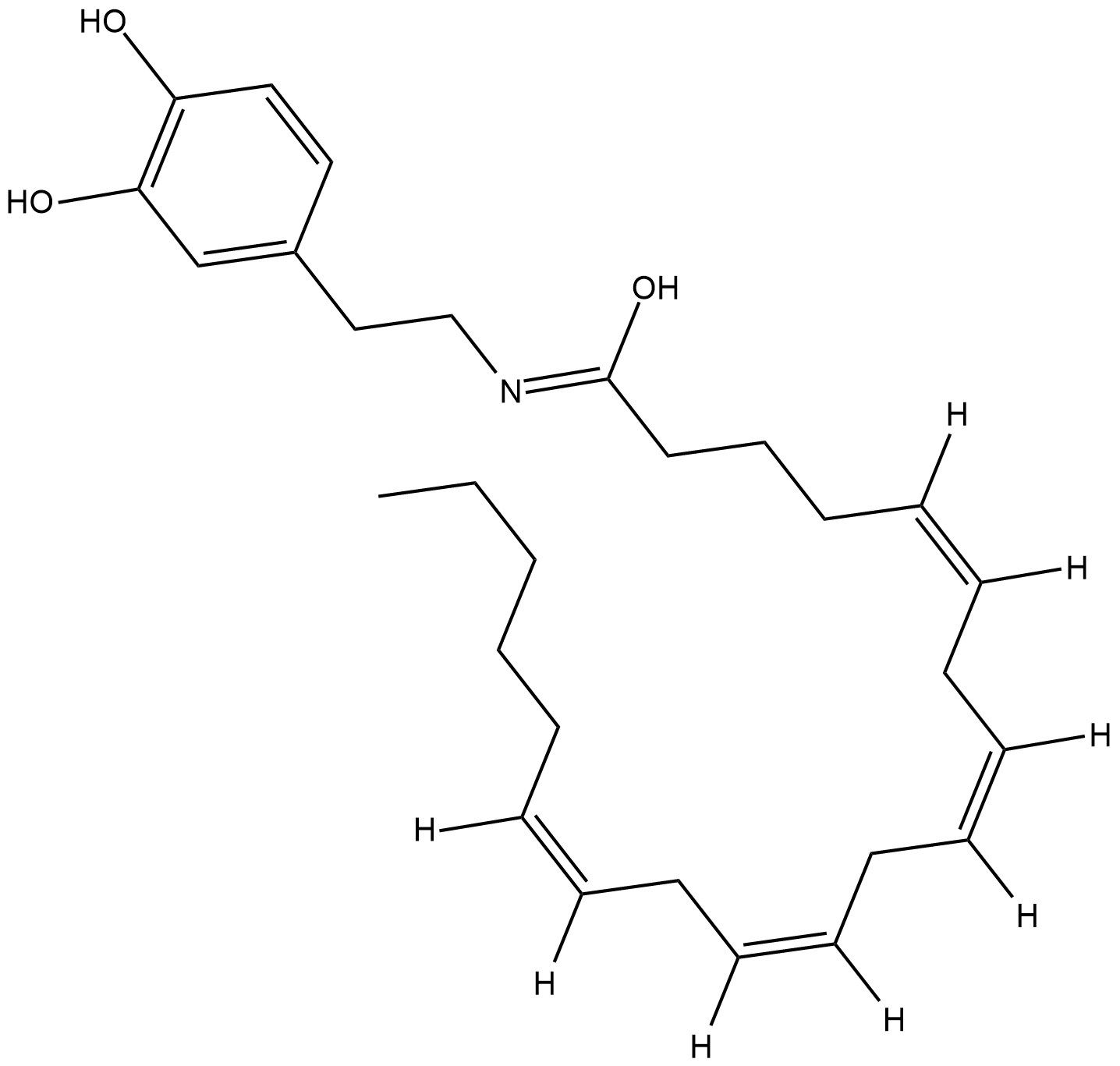
-
GC47748
N-Arachidonoyl Dopamine-d8
An internal standard for the quantification of Narachidonoyl dopamine
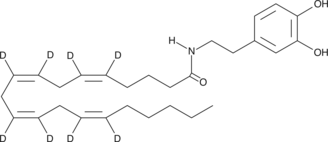
-
GC44317
N-Arachidonoyl Taurine
N-Arachidonoyl taurine is an arachidonoyl amino acid.

-
GC44318
N-Arachidonoyl-3-hydroxy-γ-Aminobutyric Acid
Several different arachidonoyl amino acids, including N-arachidonoyl-3-hydroxy-γ-aminobutyric acid (NAG-3H-ABA), have been isolated and characterized from bovine brain.
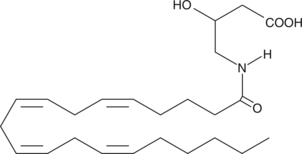
-
GC44320
N-Arachidonoyl-L-Serine
Arachidonoyl amides of both amino acids and neurotransmitters such as dopamine have been previously reported in the literature.

-
GC44339
N-Cyclohexanecarbonylpentadecylamine
Numerous analogs of fatty acyl ethanolamides potentiate the intrinsic biological activity of endocannabinoids.
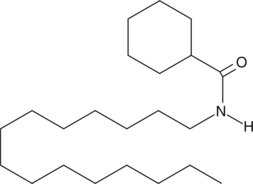
-
GC44340
N-Cyclohexanecarbonyltetradecylamine
Numerous analogs of fatty acyl ethanolamides potentiate the intrinsic biological activity of endocannabinoids.
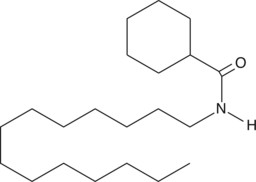
-
GC44342
N-Decanoyl p-Nitroaniline
N-Decanoyl p-nitroaniline (DepNA) is one of several nitroaniline fatty acid amides which can be used to measure fatty acid amide hydrolase (FAAH) activity.

-
GC44354
N-Docosanoyl Taurine
Several different arachidonoyl amino acid conjugates, including N-arachidonoyl dopamine and N-arachidonoyl-L-serine, have been isolated and characterized from bovine brain.

-
GC44410
N-Lignoceroyl Taurine
Several different arachidonoyl amino acid conjugates, including N-arachidonoyl dopamine and N-arachidonoyl-L-serine, have been isolated and characterized from bovine brain.

-
GC44443
N-Oleoyl Taurine
Several different arachidonoyl amino acids, including N-arachidonoyl dopamine and N-arachidonoyl serine, have been isolated and characterized from bovine brain.

-
GC44445
N-Oleoyl-L-Serine
Bone mass and shape is continuously remodeled by the concerted and balanced action of osteoblasts (bone forming cells) and osteoclasts (bone-resorbing cells).

-
GC44456
N-Palmitoyl Glycine
N-Palmitoyl Glycine (N-palmitoyl glycine), an endogenous lipid that acts as a modulator of calcium influx and nitric oxide (NO) production in sensory neurons.

-
GC44457
N-Palmitoyl Taurine
Several different arachidonoyl amino acids, including N-arachidonoyl dopamine (NADA) and N-arachidonoyl serine (ARA-S), have been isolated and characterized from bovine brain.

-
GC44469
N-Stearoyl Taurine
Several different arachidonoyl amino acids, including N-arachidonoyl dopamine (NADA) and N-arachidonoyl serine (ARA-S), have been isolated and characterized from bovine brain.

-
GC44309
NAEPA
An LPA mimetic and LPA receptor agonist

-
GC44366
Nervonoyl Ethanolamide
Nervonoyl ethanolamide is a member of the family of fatty N-acyl ethanolamines collectively called endocannabinoids.

-
GC17636
Noladin ether
Endogenous agonist for the GPR55 and CB1 receptors
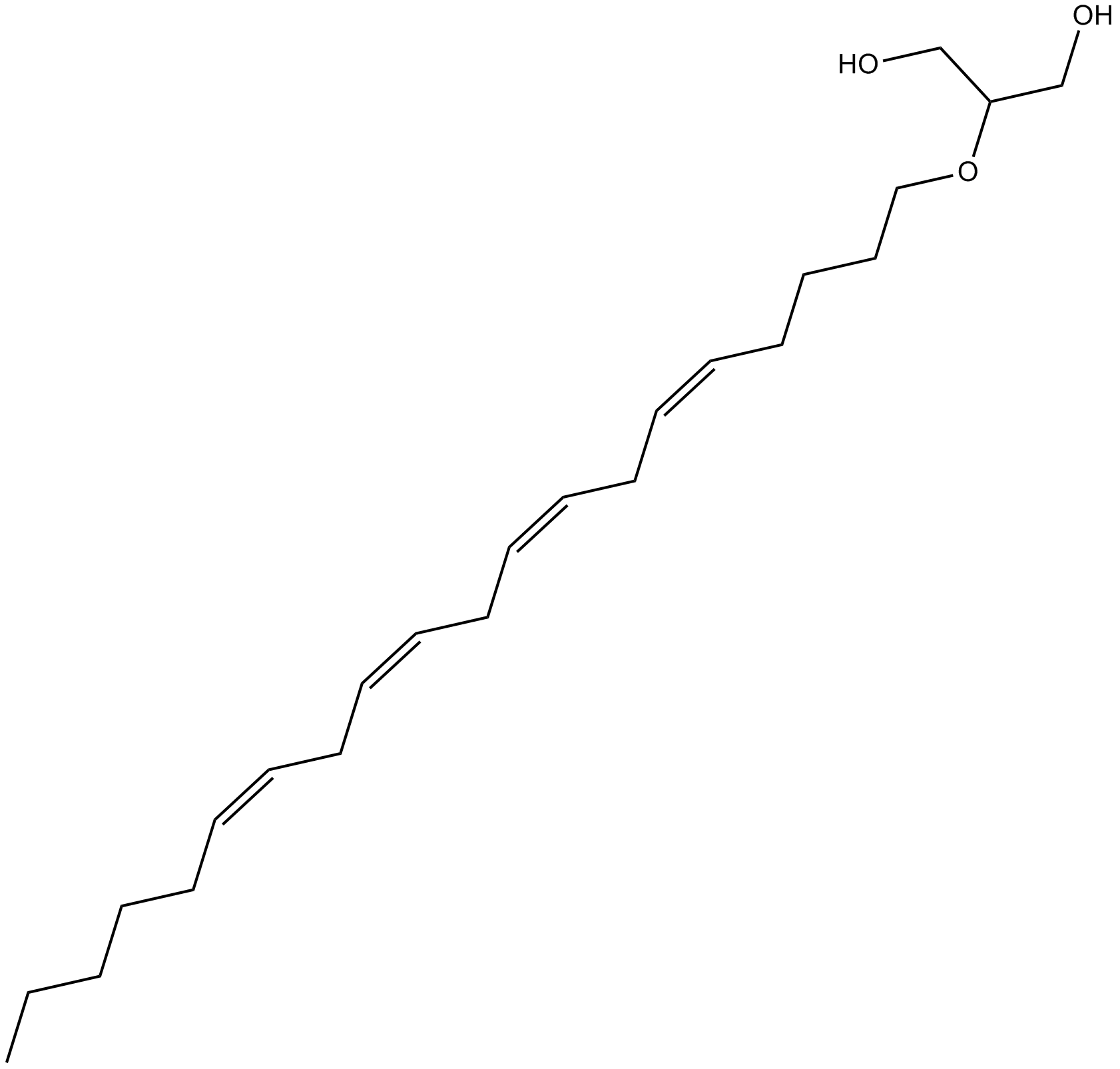
-
GC44481
O-7460
In humans, two forms of diacylglycerol lipase, DAGLα and DAGLβ, generate the endocannabinoid 2-arachidonoyl glycerol by attacking DAG at the sn-1 position.

-
GC45533
O-Arachidonoyl Ethanolamine (hydrochloride)

-
GC44482
O-Arachidonoyl Glycidol
2-Arachidonoyl glycerol (2-AG) is an endogenous ligand that binds to both central cannabinoid (CB1) and peripheral cannabinoid (CB2) receptors and is involved in the regulation of a broad range of neurotransmitter signalling functions with implications in neurodegenerative diseases, pain, cancer, and obesity.

-
GC47819
Oleoyl Ethanolamide-d2
An internal standard for the quantification of oleoyl ethanolamide

-
GC47820
Oleoyl Ethanolamide-d4
An internal standard for the quantification of oleoyl ethanolamide

-
GC44501
Oleoyl Oxazolopyridine
Fatty acid amide hydrolase (FAAH) is the enzyme responsible for hydrolysis and inactivation of fatty acid amides including anandamide and oleamide.

-
GC44502
Oleoyl Serinol
Oleoyl serinol is an analog of ceramide and an agonist of the cannabinoid receptor GPR119 that has an EC50 value of 12 μM for stimulating secretion of GLP-1 in mouse endocrine GLUTag cells.

-
GC44522
oxy-Arachidonoyl Ethanolamide
AEA acts as an endogenous mimic of δ9-THC, the psychotropic component of marijuana.
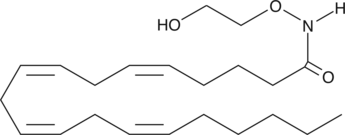
-
GC41257
Palmitoleoyl Ethanolamide
N-acylethanolamines (NAEs) are lipid-derived signaling compounds.

-
GC47865
Palmitoyl Ethanolamide-d4
An internal standard for the quantification of palmitoyl ethanolamide

-
GC44548
Palmitoyl Serinol
2-Palmitoyl glycerol (2-PG) has been isolated along with the potent endocannabinoid 2-arachidonoyl glycerol (2-AG) from various tissues.

-
GC50122
PDP-EA
FAAH activator
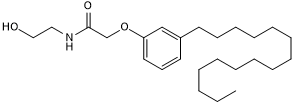
-
GC44593
Pentadecanoyl Ethanolamide
Pentadecanoyl ethanolamide is a member of the family of fatty N-acyl ethanolamines collectively called endocannabinoids.

-
GC40955
PHOP
Fatty acid amide hydrolase (FAAH) is the enzyme responsible for hydrolysis and inactivation of fatty acid amides including anandamide and oleamide.

-
GC47964
pNPS-DHA
An anti-allergic DHEA derivative

-
GC44707
Prostaglandin D2 Ethanolamide
Prostaglandin D2 ethanolamide (PGD2-EA) is a bioactive lipid produced by the sequential metabolism of anandamide (arachidonoyl ethanolamide) by cyclooxygenase (COX) enzymes, in particular by COX-2, and PGD synthase.

-
GC44709
Prostaglandin D2 serinol amide
2-Arachidonyl glycerol (2-AG) exhibits cannabinoid (CB) agonist activity at the CB1 receptor, is an important endogenous monoglyceride species, and is thus considered to be the natural ligand for the CB1 receptor.



